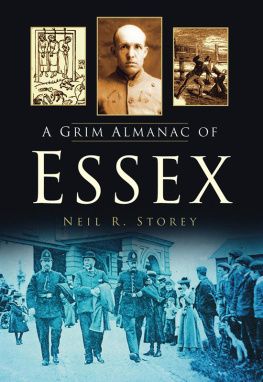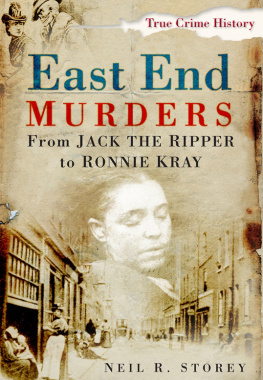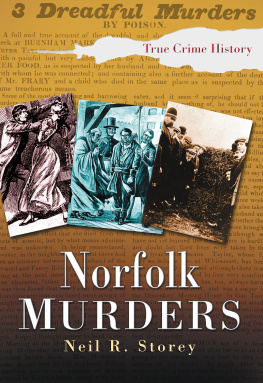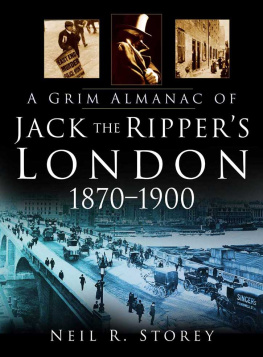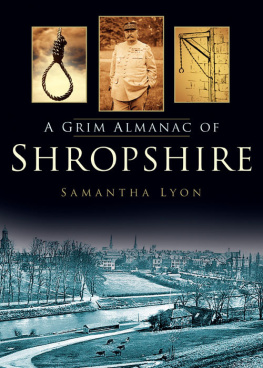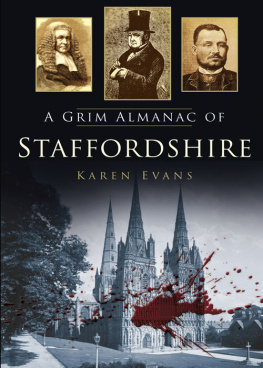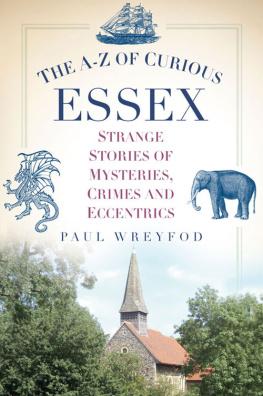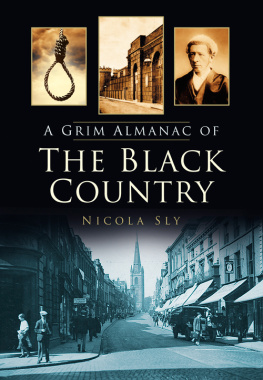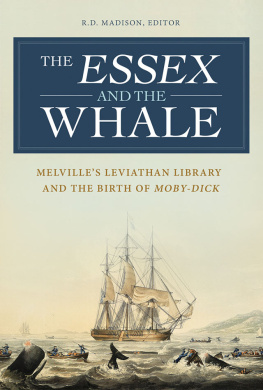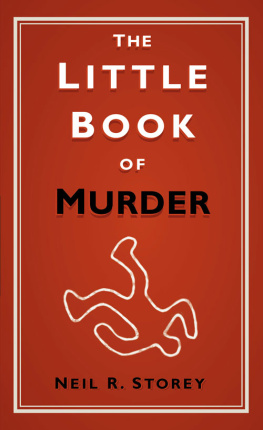
A GRIM ALMANAC OF

E SSEX

Matthew Hopkins, Witchfinder-General

Borley Church.

A GRIM ALMANAC OF

E SSEX
N EIL R. S TOREY

Death mask of Frederick Guy Browne, the murderer of PC Gutteridge. (Essex Police Museum)

The Grim Almanacs are from an original idea by Neil R. Storey
This book is dedicated to all who have trod the beat in Essex.

Police officers and men at Southminster Police Station, c. 1902
First published 2005 by Sutton Publishing
This edition published 2011 by
The History Press
The Mill, Brimscombe Port
Stroud, Gloucestershire, GL5 2QG
www.thehistorypress.co.uk
This ebook edition first published in 2013
All rights reserved
Neil R. Storey, 2005, 2010, 2013
The right of Neil R. Storey to be identified as the Author of this work has been asserted in accordance with the Copyright, Designs and Patents Act 1988.
This ebook is copyright material and must not be copied, reproduced, transferred, distributed, leased, licensed or publicly performed or used in any way except as specifically permitted in writing by the publishers, as allowed under the terms and conditions under which it was purchased or as strictly permitted by applicable copyright law. Any unauthorised distribution or use of this text may be a direct infringement of the authors and publishers rights, and those responsible may be liable in law accordingly.
EPUB ISBN 978 0 7509 5426 6
Original typesetting by The History Press

Memorial gravestone to a Roman centurion of Camulodunum.
INTRODUCTION
Truth is always strange,
Stranger than fiction.
Lord Byron, Don Juan (1823)
E ssex is a county with a long and fascinating past, but for the connoisseur of grim tales it soon becomes apparent that with so much history, so much life and so many people passing through or settling in the county over the years it is also endowed with a darker history through centuries of bloodshed, crime, dark deeds and witchcraft. Colchester can proudly claim to be one of the countrys oldest continuously inhabited towns. Archaeological investigation has revealed a Bronze Age settlement on the site, while the Romans chose to found their first major English town, Camulodunum, here. Abundant evidence of their presence can still be seen in the ancient bricks and masonry incorporated in later buildings and churches in the town, and in the rich seam of archaeology that is revealed almost every time a building or factory site in the town is cleared. Here in the modern town it is easy to forget the bloodshed on the streets of the Roman town when Boudicca, Queen of the Iceni, and her force of thousands swept down to assault the garrison in the first century AD. Taking the city on the second day of battle, they slaughtered every man, woman and child in the town.
Every invader since the Romans has espied the navigable rivers and beaches of Essex and marked them as potential routes for raids or invasion. After the Romans came the Saxons and Danes, who fought violently for the territory in battles such as those at Maldon in 991 and Assandune (Ashingdon) in 1016, which have become the subject of epic poems and folklore. In 1348 the Black Death raged through Essex, scything down thousands in a harvest of death. A number of villages in the county suffered so many deaths they became depopulated and were abandoned. In 1381 it was an Essex priest named Jack Straw who led the countys rising in the Peasants Revolt; marching on London, the men of Essex merged with Wat Tylers Kentishmen and stormed the capital.
After the accession of Mary Tudor to the throne in 1553 the horrific purging of Protestants did not pass the county by. Seventy-two men and women were burnt at the stake for their faith in Essex, chiefly at Stratford, Brentwood and Colchester (where no fewer than twenty-two people were sent to the flames in just three years for their beliefs). In 1588 the peace of the county was shattered again with fears of a Spanish invasion. On 27 July the Armada reached Calais and a false alarm was spread that Spanish soldiers had landed and were marching on London. On hearing this, Queen Elizabeth went to her garrison at Tilbury and delivered her defiant speech, including the immortal lines, I know I have the body of a weak and feeble woman, but I have the heart and stomach of a king, and of a king of England too; and think foul scorn that any prince of Europe should dare to invade my realm.

Dancing with the Devils.
The summer Assizes of Essex in 1566 saw the first notable trial for witchcraft in England after such practices were outlawed in 1563. Three women, Elizabeth Francis, Agnes Waterhouse and her daughter Joan, all of Hatfield Peverel, stood charged with witchcraft. All the elements that were to become common features of the seventeenth-century witch persecution such as selling of souls or pacts with the devil, animal familiars (in this case a cat called Satan or Sathan) rewarded or bought with drops of blood from the witch, bewitchment of children, magical appearances and killing of animals, infliction of bodily afflictions and death by curse were brought up at this trial. Agnes Waterhouse was the only one of the three accused to be executed, thus gaining the dubious honour of having been the first witch to be subject to full judicial trial and execution in early modern Britain.

The Devil presents a witch with a familiar.
In 1582 came the infamous trial of the witches of St Osyth. Thirteen women stood accused, ten of them on charges of bewitching to death. Six were found guilty and sentenced to death but only two actually went to the gallows: Elizabeth Bennett, who had confessed to killing a man and his wife by witchcraft, and Ursula Kemp, who was indicted for three deaths by bewitchment between October 1580 and February 1582. She eventually confessed and was found guilty on all three counts. In 1921 the skeleton of a woman was found in a garden in Mill Street, St Osyth. Careful excavation and examination revealed she had been pinned to the ground with iron spikes through the joints an ancient practice said to prevent a witchs spirit walking abroad and causing mischief. The skeleton was believed to be that of Ursula Kemp, and coachloads of tourists came to gaze into the open grave.
Next page
